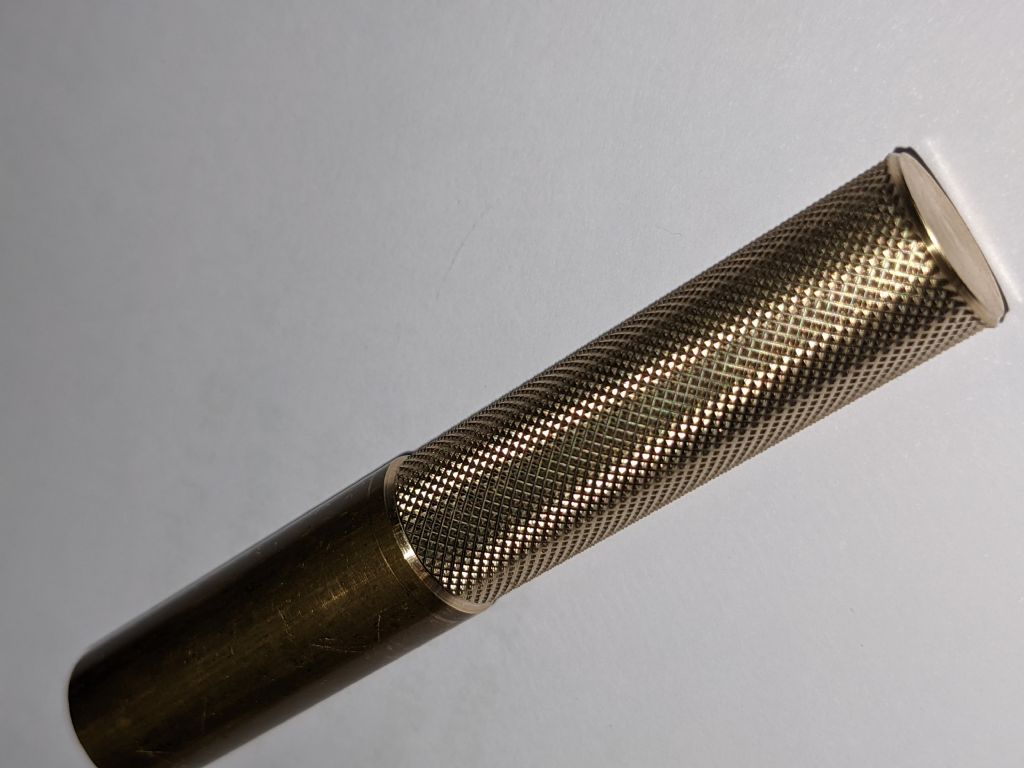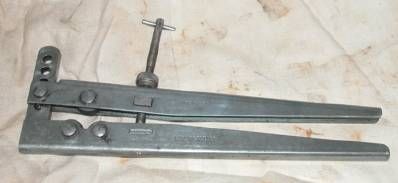Ignatz
Thats an excellent point that probably can't be settled until someone tries it successfully.
My view is that so long as the actual knurl points appear to be the same size the changes in the number of points in each circle as the circumference of the handle varies will be seen as natural.
On a parallel workpiece you see straight lines along the job where knurl points at the same angular circumferential position align. Think of a stack of same size gears with the teeth lined up. This, probably, enhances the perception of straightness so long as the knurling depth is identical and the points the same size.
On a gently curved surface, like that handle, the corresponding lines will be curved as the knurl point row alignment diverges or converges to accommodate extra points per rev where the dimeter increases and loose excess points where it decreases.The depth of knurl and absolute size of the points will change slightly during this process to make space for extra points or remove excess ones. In practice for any reasonable combination of knurl size and workpiece diameter this difference in depth and therefore point size is very small.
Providing the knurl points are not perceptibly different in size these curves will enhance the perception of handle shape and look "right". Using patterns to alter the perceived shape of objects is an old established decorative technique. For both aesthetic enhancement and obfuscation.
I suspect that if the knurl point sizes become visibly different on a row to row basis the change will stick out like a sore thumb and, as you suggest, its going to look horrible.
Totally impractical of course but I do wonder if manipulation of knurl depth could be used to increase the permitted rate of curvature before it all goes to pot. There is an extensive literature on what happens to patterns when the curvature of the underlying surface changes. Some heavily mathematical concerning manifolds and some eyewateringly visual concerning decorative effects. Neither of which should be indulged in by any normal person, especially not on a dreary Monday morning, as being likely to be seriously injurious to personal health, wellbeing and sanity.
Brains leaking out of your ears or eyes popping out of your head!
Your choice.
I'll go with neither.
Clive
Edited By Clive Foster on 20/03/2023 09:54:14
Irbailey.









